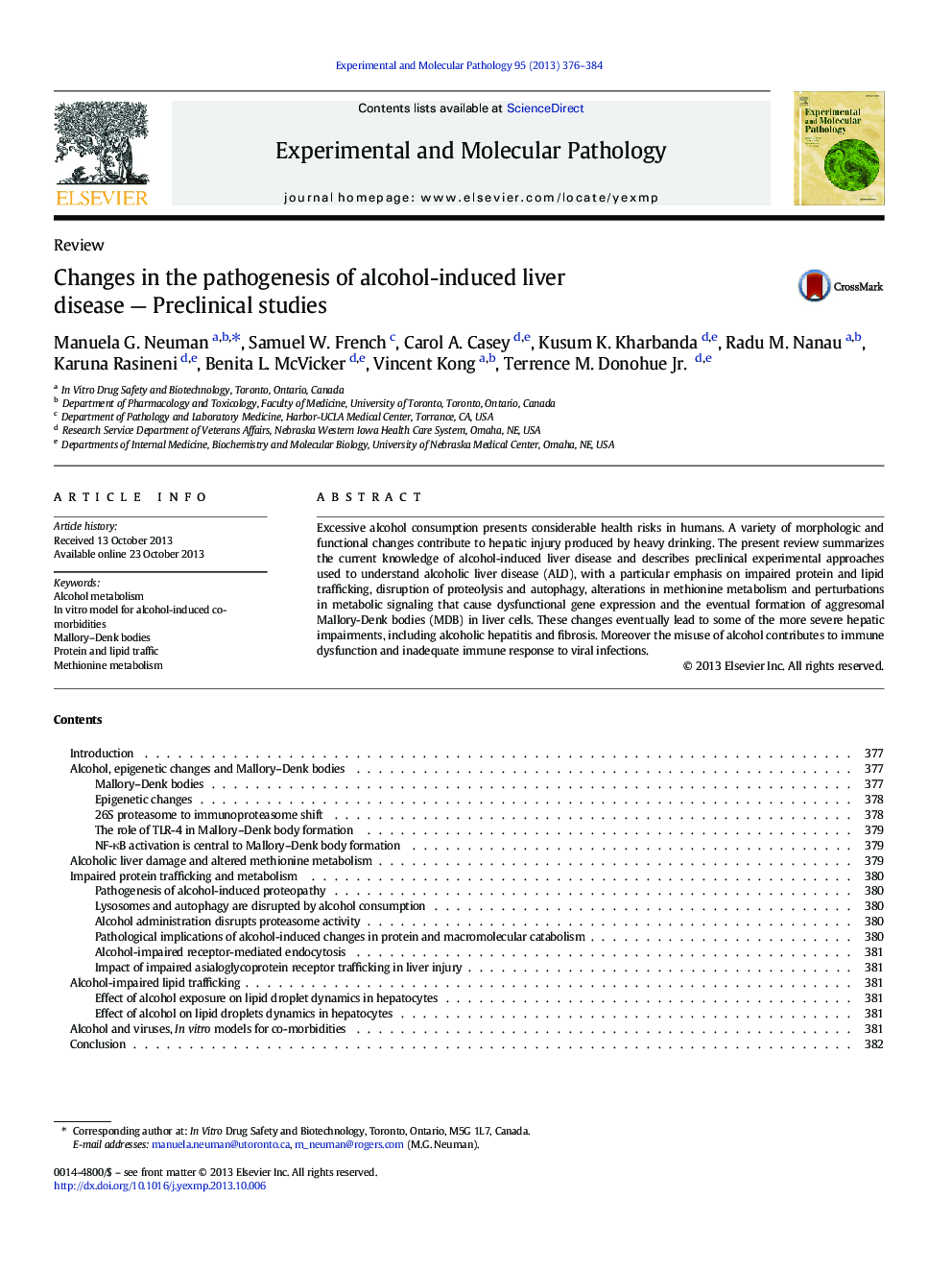| Article ID | Journal | Published Year | Pages | File Type |
|---|---|---|---|---|
| 2775287 | Experimental and Molecular Pathology | 2013 | 9 Pages |
Excessive alcohol consumption presents considerable health risks in humans. A variety of morphologic and functional changes contribute to hepatic injury produced by heavy drinking. The present review summarizes the current knowledge of alcohol-induced liver disease and describes preclinical experimental approaches used to understand alcoholic liver disease (ALD), with a particular emphasis on impaired protein and lipid trafficking, disruption of proteolysis and autophagy, alterations in methionine metabolism and perturbations in metabolic signaling that cause dysfunctional gene expression and the eventual formation of aggresomal Mallory-Denk bodies (MDB) in liver cells. These changes eventually lead to some of the more severe hepatic impairments, including alcoholic hepatitis and fibrosis. Moreover the misuse of alcohol contributes to immune dysfunction and inadequate immune response to viral infections.
